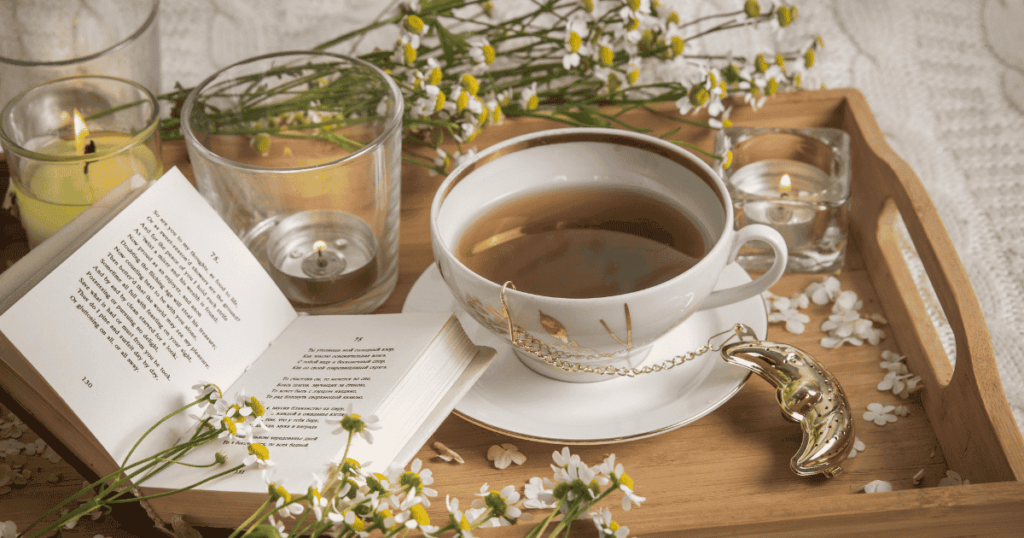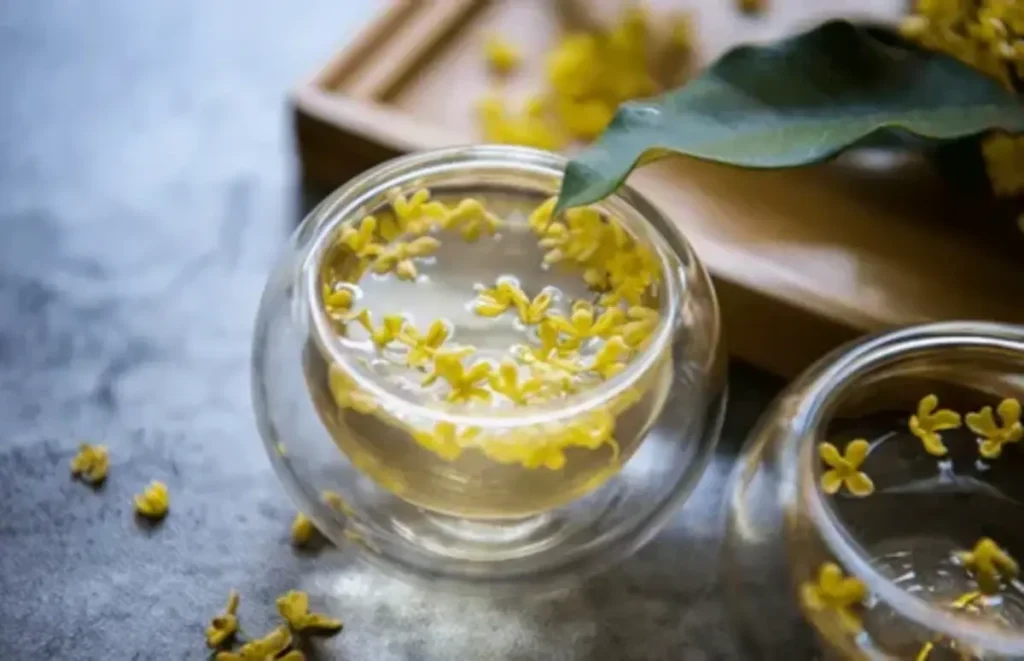Chinese restaurants traditionally present tea as the inaugural beverage to visitors after their arrival. Chinese cultural tradition embraces tea as more than a fluid beverage because it brings comfort through this traditional act. What type of tea do Chinese restaurants serve, along with its significant role during dining sessions?
Chinese restaurant tea selections consist of flowers and earthy ferments, which customers choose because they taste good and deliver health advantages as well as meal enhancement. Chinese restaurant patrons can enjoy various tea types along with their insights about flavors and home-brewing recommendations for optimal results.
Why Tea Is a Staple in Chinese Restaurants?
The Chinese dining tradition considers the tea offering as the symbol of both generosity and maintaining balance between meals. Restaurant staff serve tea immediately after guests get settled down, even before water is offered to customers. Tea has more significance in Chinese dining than just following etiquette. Restaurant tea in Chinese establishments provides three benefits that help digestion while also cleaning up the palate to match all dishes, including the popular dim sum and intense Sichuan flavors.
Restaurant guests in China have been served tea for thousands of years, and this practice continues actively in establishments throughout China and internationally. Premium leaf variants make up these teas as skilled brewers create dedicated brewing methods to optimize their inherent taste profile. The following section discusses the most well-known tea categories.
Jasmine Tea

The Chinese dining establishments following Cantonese traditions primarily offer Jasmine tea to their customers. Green tea leaves receive their noted fragrant quality through their absorption of jasmine blossom flowers during their brewing time.
Flavor: Light and fresh
Pairs Well With: Dim sum, steamed fish, and mild-flavored dishes
How to Brew Jasmine Tea
Use water around 175°F (80°C). Put one teaspoon of loose-leaf jasmine tea for 2 minutes. Boiling water should be avoided since it will make the tea bitter. A proper measure of jasmine tea will extract its flavors 2 to 3 times through steeping.
Oolong Tea

Oolong tea exists as a semi-oxidized product with a flavor intensity that falls between green tea and black tea. The tea comes in many distinct variations, which range from floral and creamy and roasted and toasty.
Flavor: Ranges from floral to roasted
Pairs Well With: BBQ pork, roasted duck, and stir-fried dishes.
How to Brew Oolong Tea
Use water heated to about 195°F (90°C). Steep one teaspoon for 3 minutes. Quieted oolong tea leaves create several brewing cycles, which unveil progressively different flavor sequences.
Pu-erh Tea (Shou Pu-erh)

The fermentation process of dark tea in Yunnan Province results in aged Pu-erh tea. People appreciate this tea for its earthy flavor and its skill at digesting food because it becomes their restaurant companion when serving greasy meals.
Flavor: Earthy, mellow, deep
Pairs Well With: Fried rice, hot pot, Peking duck, braised meats.
How to Brew Pu-erh Tea
Boil water to 212°F (100°C). Rinse the leaves quickly (30 seconds), then steep again for 2–3 minutes. The tea experience improves when you repeat steepings since it can maintain its quality over 5–6 successive steeping cycles.
Dragon Well Tea (Longjing)

For Chinese citizens, Dragon Well, also known as Longjing, represents their nation’s most famous green tea, and it comes from the location of Hangzhou. People discover Dragon Well tea in Chinese dining establishments that serve authentic and traditional Chinese food due to its delicious flavor with a nutty note.
Flavor: Grassy, slightly sweet, nutty
Pairs Well With: Seafood, light stir-fries, tofu dishes
How to Brew Dragon Well Tea
Heat water to about 175°F (80°C). Steep one teaspoon of tea for 1–2 minutes. Bitterness will develop when boiling water is used during the preparation of green tea.
Chrysanthemum Tea

The herbal base of typical tea leaf products differs from Chrysanthemum tea because it contains dried flowers from chrysanthemum plants. Chrysanthemum tea provides both a caffeine-free experience and refreshing comfort, so it becomes an excellent beverage choice alongside spicy dishes.
Flavor: Mildly sweet, floral, refreshing
Pairs Well With: Sichuan hot pot, spicy noodles, chili oil dishes.
How to Brew Chrysanthemum Tea
Boil water (212°F) to steep dried flowers for 3–5 minutes while adding rock sugar or honey to personal taste preferences for sweetness.
Tie Guan Yin (Iron Goddess of Mercy)

The Chinese population knows Tie Guan Yin since it originates from Fujian Province as an elite oolong tea with distinctive floral notes and multiple sophisticated tasting layers. This elite tea finds its place in professional Chinese restaurants because it delivers an exquisite dining experience to their guests.
Flavor: Floral, buttery, complex
Pairs Well With: Seafood, delicate stir-fries, soups.
How to Brew Tie Guan Yin
Use water around 195°F (90°C). Steep for 2–3 minutes. Multiple short-steeping brewing techniques produce exceptional outcomes when using this tea through Gongfu-style brewing methods.
Osmanthus Tea

The traditional tea blend combines osmanthus blossoms with either green or oolong tea. Its fragrant herbal nature comes from osmanthus blossoms. The drink delivers floral flavor together with subtle peach and apricot characteristics, which create a refreshing experience.
Flavor: Sweet, fruity, floral
Pairs Well With: Light snacks, pastries, or enjoyed on its own.
How to Brew Osmanthus Tea
Steep dried osmanthus flowers (or blended leaves) in hot water around 185°F (85°C) for 2–3 minutes.
What is the Secret Behind the Flavor?
The distinctive flavor of Chinese restaurant tea remains a mystery to most people. Chinese restaurant tea professionals utilize both specific tea preparations and specialized preparation methods. Chinese restaurants prepare their tea by using premium loose-leaf tea products while controlling water temperatures and applying precise brewing methods to maintain light flavors. The correct temperature and aroma of the tea rest perfectly within small porcelain or clay teapots.
A proper brewing technique, together with choosing suitable food components, creates the remarkable experience of Chinese restaurant tea.
FAQ:
What is the tea used in Chinese restaurants?
Jasmine tea is the most common, especially in American Chinese restaurants and dim sum houses.
Is the tea caffeinated?
Yes, most of the teas like jasmine, oolong, and Pu-erh contain caffeine. Herbal teas like chrysanthemum and osmanthus are caffeine-free.
Can I order a specific tea at a restaurant?
Yes, you can usually request a specific type like oolong or Pu-erh. Many restaurants are happy to accommodate if available.
Does Chinese restaurant tea help with digestion?
Absolutely. Pu-erh and oolong teas are especially known for their digestive benefits and are often served after heavy meals.
Why is tea always served at the beginning of the meal?
It’s a traditional symbol of welcome and hospitality. It also cleanses the palate and prepares the body for food.
Conclusion
You now understand what Chinese restaurants use for tea making, hence why this simple beverage holds such significant importance during every dining meal. The diverse tea types bring separate smells and medical advantages, and taste characteristics to improve your restaurant dining.
Chinese restaurants combined with tea introduce humble cups holding centuries of traditional heritage to their guests. Once you drink your first warm sip of the day, you will understand that you are experiencing cultural heritage.




中国餐厅传统文化中,茶作为迎接客人的首饮,体现了深厚的文化意义。茶不仅是一种饮品,更是一种带来舒适感的传统习俗。餐厅提供的茶类多样,其中茉莉花茶、乌龙茶和普洱茶各具特色,帮助消化并清洁味蕾。这些茶类在中国餐厅中已沿用数千年,至今仍广为流传。中国餐厅为什么特别重视茶的选择和泡制方法呢?
中国的茶文化源远流长,餐厅里以茶待客体现了我们的礼仪与热情。这种传统不仅让客人感受到宾至如归的温暖,还能帮助消化和解腻。不同种类的茶搭配不同风味的菜肴,展现了中华饮食文化的精髓。真希望更多人能认识并喜爱中国茶的艺术!
您觉得在西方餐厅推广中国茶文化会遇到哪些挑战呢?
这篇关于中国餐厅茶文化的文章非常有趣,详细介绍了茶在中国餐饮中的重要性。茶不仅仅是一种饮品,更是中国传统文化的一部分,象征着热情好客和平衡。文章中提到的不同种类的茶,如茉莉花茶、乌龙茶和普洱茶,各有其独特的风味和功效。特别是普洱茶,对于消化油腻食物非常有帮助。文章中提到的泡茶技巧也很有用,比如避免使用沸水泡茉莉花茶,以免茶味变苦。不过,我很好奇,为什么中国餐厅会选择特定的茶来搭配不同的菜肴?这是否与茶的风味和功效有关?另外,文章中提到的“龙井茶”在中国人心中的地位很高,能否详细介绍一下它的历史和文化背景?
中国的茶文化历史悠久,餐馆里奉茶是表示对客人的尊重和热情款待。茶不仅仅是饮品,更是文化和礼仪的象征。每种茶都有其独特的味道和功效,比如茉莉花茶清香怡人,乌龙茶介于绿茶和红茶之间,口感丰富多样。普洱茶则以其独特的发酵工艺和助消化功能而闻名。想问问大家,你最喜欢的中国茶是哪一种?为什么?我个人觉得,茶不仅是一种饮品,更是一种生活方式的体现。你是否也觉得,在餐馆里喝茶能让人感觉更舒适和放松?期待听到你的看法和体验!
中国的茶文化源远流长,茶在餐厅中的角色不仅仅是饮品,更是一种礼仪和文化的体现。茶在用餐过程中不仅能帮助消化,还能清洁味蕾,使每一道菜的味道更加突出。从龙井到普洱,每一种茶都有其独特的风味和功效,体现了中国茶文化的多样性。茶艺师们精心冲泡,确保每一杯茶都能展现出最佳的口感。茶在中国的餐厅中不仅是饮品,更是一种待客之道的象征。你是否觉得茶在用餐中的重要性被低估了?茶文化在现代社会中是否依然保持着其传统的地位?
Этот текст рассказывает о традиции подачи чая в китайских ресторанах и его значимости в культуре. Мне кажется, что чай — это не просто напиток, а важный элемент гостеприимства и баланса во время трапезы. Интересно, как разные виды чая, такие как жасминовый, улун и пуэр, подчеркивают разнообразие китайской кухни. Я никогда не задумывался, что температура воды и время заваривания так сильно влияют на вкус. А вы пробовали настоящий китайский чай в ресторане? Какой из описанных видов чая вам больше всего понравился бы? Мне кажется, что пуэр с его земляным вкусом идеально подошел бы к жирным блюдам. Что вы думаете о роли чая в создании атмосферы во время еды?
在中国餐厅,茶不仅仅是一种饮品,更是一种文化的体现。它为客人带来舒适感,象征着主人的慷慨与好客。茶在用餐过程中起到了平衡和助消化的作用,尤其是在品尝多样化的菜肴时。从茉莉花茶到乌龙茶,再到普洱茶,每一种茶都有其独特的风味和功效。茶艺师们精心冲泡,确保每一杯茶都能展现出最佳的口感。茶文化在中国已有数千年的历史,至今仍在国内外广泛流传。你是否觉得茶在用餐中的角色被低估了?它是否应该被视为与食物同等重要的部分?
中国的茶文化真是博大精深,茶不仅仅是一种饮品,更是一种传统和礼仪的象征。在餐厅里,茶不仅帮助消化,还能清洁味蕾,让每一道菜的味道都能得到充分体现。茉莉花茶、乌龙茶和普洱茶各有特色,每一种茶都有其独特的冲泡方法和风味。特别是普洱茶,它的陈年风味和助消化的功效让人印象深刻。龙井茶作为中国的国茶,更是代表了中国的文化和历史。茶在中国的餐桌上扮演着如此重要的角色,真是让人感叹不已。你觉得在现代化的生活中,这种传统的茶文化还能继续保持下去吗?
这篇关于中国餐厅茶文化的文章非常有趣,尤其是茶在中国餐桌上的重要性被很好地展现了出来。茶不仅仅是一种饮品,更是一种文化和传统的象征,传递着慷慨和平衡的理念。我特别好奇,不同的茶叶在不同的餐厅中是否有特定的搭配规则?比如,某些茶是否更适合配特定的菜肴?另外,文章中提到的普洱茶的“助消化”功效,是否有科学依据,还是更多是传统经验的积累?我也很想了解,在国际化的背景下,中国茶文化是否有所变化,或者是否依然保持着其传统的核心价值?总的来说,这篇文章让我对中国的茶文化有了更深的兴趣,但同时也激发了我更多的疑问,期待能够进一步探讨!你有什么看法或者补充吗?
中国的茶文化源远流长,茶在餐厅中的角色不仅仅是饮品,更是一种待客之道的体现。茶在用餐过程中不仅帮助消化,还能清洁味蕾,使食客更好地享受每一道菜肴。茉莉花茶、乌龙茶和普洱茶等各具特色,每一种茶都有其独特的冲泡方法和风味。茶的温度、冲泡时间都需讲究,以确保最佳口感。茶在中国餐厅中的传统延续了数千年,至今仍在国内外广泛流传。茶不仅是一种饮品,更是一种文化的传承和情感的交流。你觉得在当今快节奏的生活中,这种传统的茶文化是否还能保持其原有的意义和影响力?
中国的餐厅传统上用茶来迎接客人,这不仅仅是一种饮品,更是一种文化的象征。茶在中国的餐饮文化中扮演着重要的角色,它不仅是礼貌的体现,还能帮助消化和清理味蕾。我个人非常喜欢这种悠久的传统,它让用餐体验更加完整。茉莉花茶和乌龙茶是我最喜欢的茶类,它们的香气和口感令人难忘。特别是普洱茶的陈香和助消化功能,非常适合搭配油腻的菜肴。龙井茶作为中国的代表茶,更是让人感受到浓厚的民族自豪感。我想问问,大家在享受这些茶品的同时,是否也感受到了中国文化的深厚底蕴?